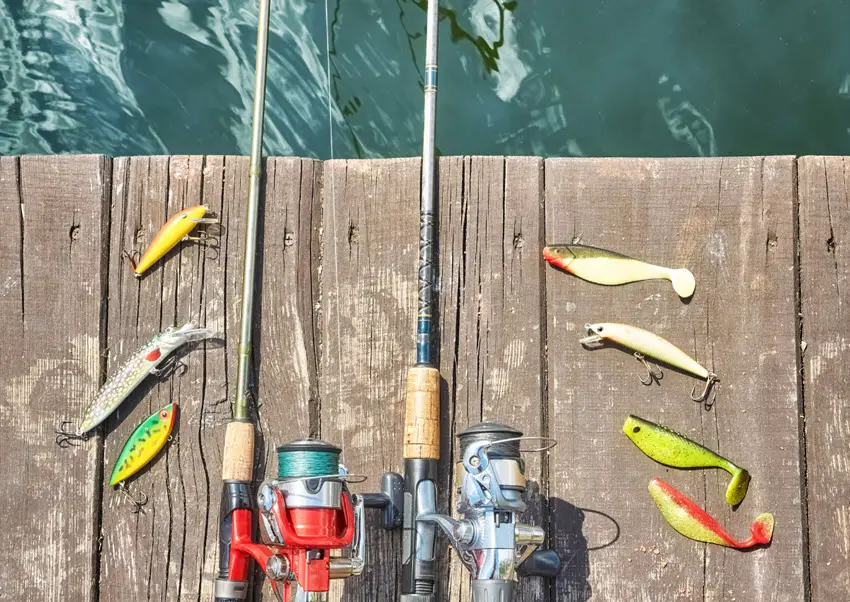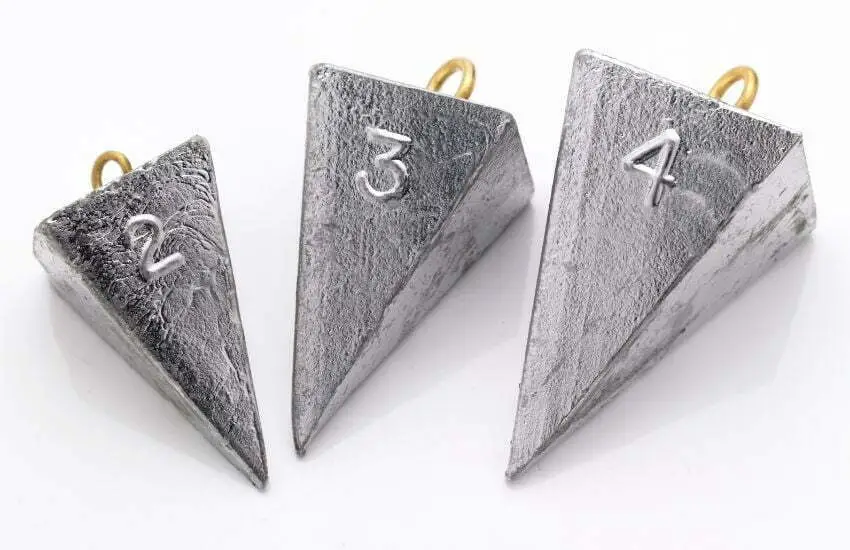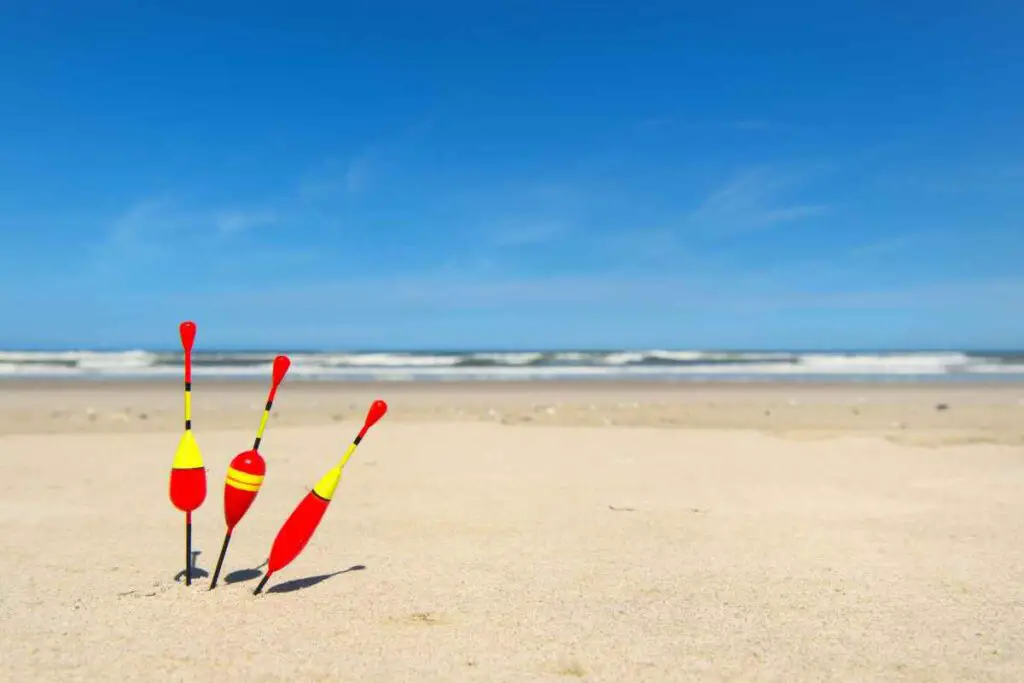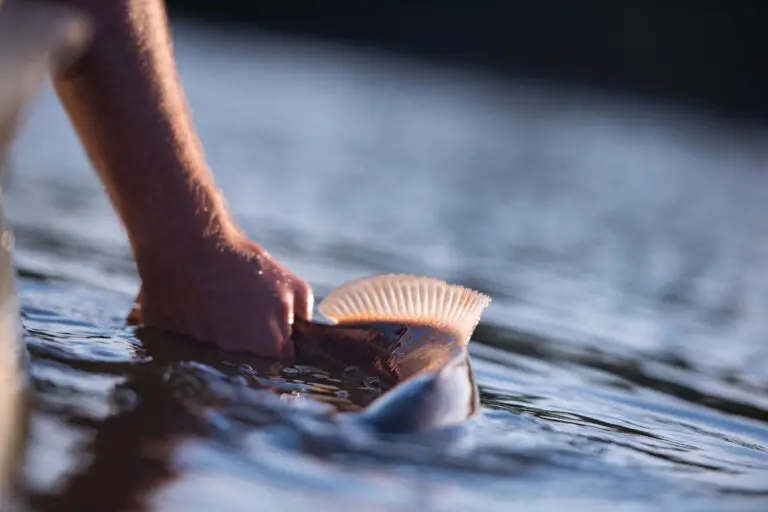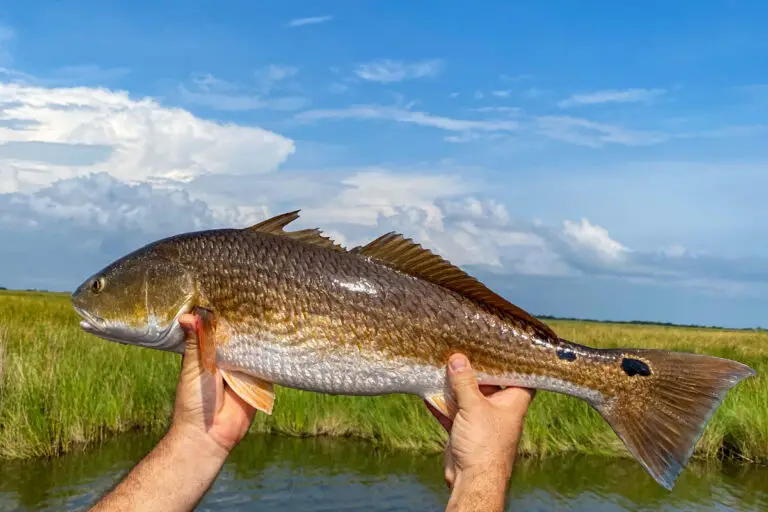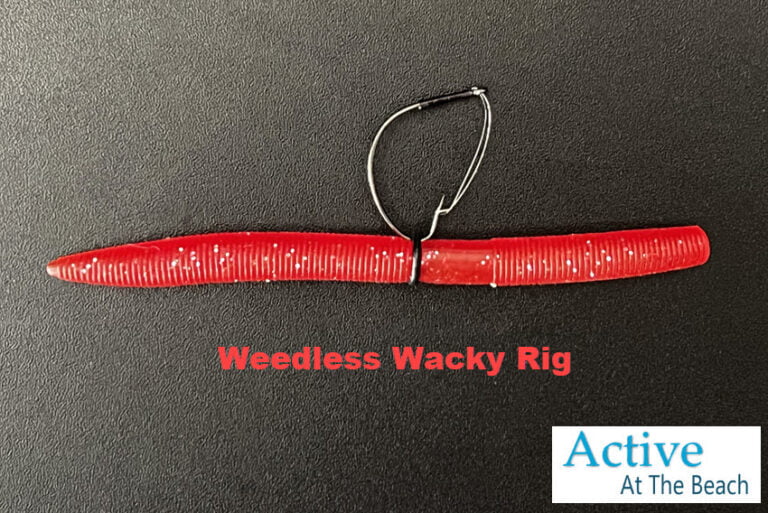Top 3 Rigs for Landing More Speckled Trout: Expert Advice to Increase Your Catch
Estimated reading time: 17 minutes
Are you ready to try out my favorite rigs for catching speckled trout? I’m going to cover the best ways I have found to rig your gear and increase your chances of landing these popular saltwater fish. You’ll learn the essentials of creating a successful setup, including the Carolina rig, the double rig, and the popping cork rig.
It’s important to know how to rig your fishing tackle and gear properly. Rigging is simply setting up your fishing line, leader, hook, lure, weight, and cork (if needed) to match the conditions and the fish you’re targeting. A well-designed speckled trout rig will help you present your bait or lure in a natural and effective way, increasing your chances of hooking and landing these fish.
I will share with you the best speckled trout rig I go with, the basics of rigging for speckled trout, and some of the most popular and effective fishing rigs you can use. I’ll also provide some tips on understanding speckled trout behavior and habits, and how to adjust your fishing techniques accordingly. By the end of this post, you’ll be ready to hit the water and catch some specks like a pro! So let’s get started and reel in those specks!
Rigging Basics
Before we dive into the nitty-gritty of speckled trout rigs, let’s cover some principles that apply to any saltwater fishing outing. These guidelines will set you up for success:
- Your line is the vital link between you and the big catch. It’s crucial to choose a main line that strikes a balance between strength and stealth. Look for a strong, yet thin braided line for speckled trout fishing. Braided line outshines monofilament or fluorocarbon counterparts with its superior qualities. It’s stronger, thinner, more sensitive, and more durable. Plus, its minimal stretch ensures you feel every bite and can swiftly set the hook. But, it is highly visible in the water.
- The leader plays a crucial role in protecting your main line and ensuring a stealthy presentation. For targeting spotted seatrout, opt for a fluorocarbon leader. It offers low visibility underwater (almost invisible) and excellent resistance against abrasion. Moreover, fluorocarbon sinks faster, keeping your bait or lure within the fish’s striking range.
When it comes to the leader’s length and strength, consider the conditions and the size of your target fish. Try for a leader that hides the mainline from the fish’s vision without compromising your casting distance or accuracy.
As a general rule of thumb, go for a leader approximately twice the length of your fishing rod. For example, if your rod measures 7 feet, a 14-foot leader should do the trick.
In terms of strength, aim for a leader slightly lighter than your main line. This way, if you encounter snags or break-offs, you won’t lose everything. Select a leader that’s around 80% of the strength of your main line. For instance, if you’re using a 20-pound braided line, a 16-pound fluorocarbon leader is a solid choice.
Hooks and Lures
The hook is what truly snags the fish. You need a hook that has the right balance between sharpness and strength. It should easily penetrate the fish’s mouth while maintaining its integrity without bending or breaking. Additionally, it’s crucial to select a hook that complements the size and shape of your bait or lure.
When it comes to speckled trout fishing (and targeting other game fish too), I highly recommend using circle hooks with live or cut bait. These hooks are specifically designed to catch the fish in the corner of their mouth, minimizing the risk of hooking them in sensitive areas like the throat or stomach. This not only makes catch and release smoother but also promotes the conservation of these awesome fish.

When it comes to artificial lures for speckled trout, opt for jig heads as your hooks. Jig heads are weighted hooks with a molded head and an eyelet for attaching your main line or leader. They come in various sizes, shapes, colors, and weights.
Choose a jig head that matches the size and color of your lure body, whether it’s a soft plastic or natural bait. Ensure the jig head has enough weight to keep your lure close to the bottom, where speckled trout are often found feeding.
Weights and Corks
Weights are vital components for adjusting the sinking speed and casting distance of your rig. You can choose from a variety of shapes and sizes, such as split-shot, bullet weights, egg sinkers, or pyramid sinkers. The key is to find a weight that provides enough heft to keep your bait or lure in the strike zone while still allowing for natural movement.
When targeting speckled trout, it’s best to opt for the lightest weight that suits the conditions and fishing depth. As a useful rule of thumb, aim for approximately 1/8 ounce of weight per every 10 feet of water depth.
Corks are indispensable tools that serve two important purposes in fishing. They help suspend your bait or lure at the desired depth, while also acting as strike indicators. Corks come in various shapes and sizes, including round, oval, slip, and popping corks. It’s important to select a cork that is buoyant enough to support your bait and leader but not excessively large, as this could startle fish or create unnecessary drag.
For targeting speckled trout, popping corks are highly recommended. These corks produce a distinctive popping sound when you twitch your rod tip, mimicking the feeding activity of baitfish or shrimp. This enticing sound can attract speckled trout and entice them to strike your bait or lure.
Baiting Your Rigs
When it comes to live bait, give yourself an edge by hooking it through the lips or behind the dorsal fin. This method keeps the bait looking natural and irresistible to the fish.
When hooking live shrimp, you have two options: a treble hook or a circle hook. Use a treble hook by inserting it through the tail of the shrimp to increase its swimming action, or choose a circle hook and insert it through the horn of the shrimp to ensure a natural presentation and easy hookset.
For cut bait, a simple trick is to hook it through one end. This ensures that it stays securely attached to the hook, ready to attract your target.
When using artificial lures, thread them onto the jig head for the best presentation and movement in the water.
Popular Speckled Trout Rigs
Now that you’ve got the hang of rigging for speckled trout, let’s dive into some tried-and-true setups that are popular and effective. These rigs are simple to assemble and perfect for various situations and conditions.
Popping Cork Rig
One of the go-to rigs that I absolutely love for speckled trout fishing is the popping cork rig. It’s a setup that never fails to entice those feisty specks.
Here’s how it works: Start by attaching a popping cork to your main line or leader, then add a short 18-inch leader and treble hooks. This setup allows you to suspend your bait or lure at a desired depth below the surface while creating enticing noise and commotion that speckled trout just can’t resist.
Whether you’re fishing in shallow or deep water, exploring grass flats, oyster bars, sand bars, or drop-offs, the popping cork rig is your ticket to success. Give it a try and get ready to reel in some trophy speckled trout!
Optimizing Bait Depth
Here are a key tip for keeping your bait at the right depth when targeting speckled trout:
- Use your rod tip or pole to measure the water depth.
- Cut your leader line about 6 inches shorter than the measured depth.
- This ensures that your bait stays close to but slightly above the bottom.
Speckled trout often feed near the bottom, so this technique mimics their natural feeding behavior. Keep your bait within the strike zone to increase your chances of attracting speckled trout.
Popping Cork Rig Parts List
To set up a popping cork rig, you will need the following parts:
- A popping cork (I prefer the ones with a wire stem and a concave top)
- A swivel (to prevent line twist)
- A piece of fluorocarbon leader (about 18 inches long or match the depth of water) and 20-pound test.
- A treble hook (size 1/0) or a circle hook (size 1/0) with your bait.
Steps To Setup Popping Cork Rig
To set up a popping cork rig, follow these steps:
- Begin by securing one end of your main line or leader to the swivel using either a clinch knot or a Palomar knot.
- Thread the popping cork onto your main line or leader, sliding it along the wire stem.
- Next, tie the other end of your main line or leader to the opposite end of the swivel, using a clinch knot or a Palomar knot.
- Take your fluorocarbon leader and attach one end to the hook or jig head using a clinch knot or a Palomar knot.
- Complete the setup by tying the other end of the fluorocarbon leader to the bottom eyelet of the popping cork with a clinch knot or a Palomar knot.
- Finally, secure your bait or lure onto the hook or jig head, and you’re ready to hit the water.
Check out this video brought to you by FTWQ, on how to tie a Palomar fishing knot that’s perfect for securing your line to hooks, lures, or swivels.
Check out the video from Salt Strong on how to rig live shrimp under a popping cork.
Carolina Rig
If you’re looking for a straightforward and effective rig for speckled trout, the Carolina rig is your go-to. This rig is made up of a weight, a swivel, a generous length of leader (around 3 feet), and a hook or jig head with your preferred bait or lure.
The Carolina rig is perfect for dragging your bait or lure along the bottom, allowing for minimal resistance from the weight. Whether you’re fishing in deep water, exploring mud flats, cruising over shell bottoms, or exploring rocky areas, the Carolina rig is a reliable choice.
If you’re interested in targeting redfish, Check out our post on Carolina rigs for redfish that you might find helpful.
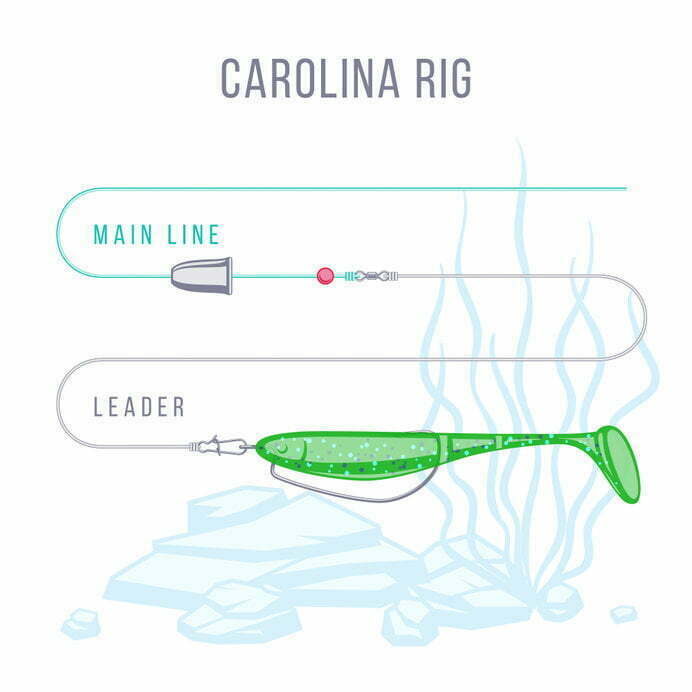
Carolina Rig Parts List
To set up a Carolina rig, you will need the following parts:
- A weight (I prefer an egg sinker or bullet weight, about 1/4 to 1/2 ounce)
- A bead (to protect your knot from the weight)
- A swivel (to prevent line twist)
- A piece of fluorocarbon leader (about 3 feet long and 16-pound test)
- A circle hook (size 2/0) or a jig head (1/8 ounce) with your bait or lure
Steps To Setup Carolina Rig
To set up a Carolina rig, follow these steps:
- Slide the weight onto your mainline or leader line.
- Slide the bead onto your mainline or leader line tight after the weight.
- Tie one end of your mainline or leader to the swivel using a clinch knot or a Palomar knot.
- Tie one end of your fluorocarbon leader to the other end of the swivel using a clinch knot or a Palomar knot.
- Tie the other end of your fluorocarbon leader to the hook or jig head using a clinch knot or a Palomar knot.
- Attach your bait or lure to the hook or jig head.
Double Rig
The double rig is a variation of the Carolina rig that allows you to use two baits or lures at once. It consists of a weight followed by a swivel attached to your main line or leader, followed by two pieces of leader (about 18 inches each) and two hooks or jig heads with your baits or lures. The double rig allows you to cover more water and attract more fish with two different presentations. You can use this rig in deep water, over mud flats, shell bottoms, or rocky areas.
Double Rig Parts List
To set up a double rig, you will need the following parts:
- A weight (I prefer an egg sinker or bullet weight, about 3/8 ounce)
- A bead (to protect your knot from the weight)
- A three-way swivel (to attach two leaders)
- Two pieces of fluorocarbon leader (about 18 inches each and 16-pound test)
- Two circle hooks (size 2/0) or two jig heads (3/8 ounce) with your baits or lures
Steps To Setup Double Rig
To set up a double rig, follow these steps:
- Slide the weight onto your main line or leader.
- Slide the bead onto your main line or leader after the weight.
- Tie one end of your main line or leader to one eyelet of the loop knot or three-way swivel using a clinch knot or a Palomar knot.
- Tie one end of one fluorocarbon leader to another eyelet of the three-way swivel using a clinch knot or a Palomar knot.
- Tie one end of another fluorocarbon leader to the remaining eyelet of the three-way swivel using a clinch knot or a Palomar knot.
- Tie the other end of each fluorocarbon leader to a hook or jig head using a clinch knot or a Palomar knot.
- Attach your baits or lures to the hooks or jig heads.
Learn more about creating a double rig here.
Take a look at this video from Louisiana Specks showcasing double rigs for speckled trout.
Understanding Speckled Trout
If you want to reel in more speckled trout, it’s crucial to know where they hang out and how they behave throughout the year.
- These fish are found in estuaries, where freshwater mixes with saltwater, creating a brackish environment.
- They feel right at home in water temperatures ranging from 68 to 75 degrees Fahrenheit.
- Speckled trout are resilient when it comes to salinity, tolerating levels anywhere from 5 to 35 parts per thousand.
- When it comes to mealtime, they’re not picky eaters. These opportunistic predators will go after shrimp, crabs, mullet, menhaden, pinfish, croakers, and any other small fish that crosses their path.
Understanding these habitat and feeding preferences will give you an edge in targeting and landing more speckled trout on your fishing adventures.
Habitat
When it comes to targeting speckled trout, understanding their preferred inshore fishing habitats is key. These fish can be found in a variety of locations within an estuary, and their choice of habitat may vary based on factors like water temperature, tide, and weather conditions. Here are some of the most common habitats where you can encounter speckled trout:
- Grass Flats: Speckled trout often inhabit grassy areas with submerged vegetation, such as seagrass beds or marshy flats. These flats provide cover and a rich food source for the fish.
- Oyster Beds: Speckled trout are known to seek out oyster reefs or beds. These structures not only offer shelter but also attract baitfish and other prey that speckled trout feed on.
- Channels and Drop-Offs: Deep channels, especially those with nearby drop-offs or ledges, are popular spots for speckled trout. They use these areas to ambush passing prey and take advantage of current flow.
- Mangrove Shorelines: In coastal areas with mangrove forests, speckled trout can often be found along the edges of mangrove shorelines. These areas provide shelter and a diverse range of prey.
- Jetties and Rocks: Speckled trout are attracted to structures like jetties, breakwaters, and rocky shorelines. These areas create pockets of current and offer hiding places for baitfish, making them prime hunting grounds for speckled trout.
By targeting these different inshore fishing habitats, you increase your chances of hooking into speckled trout and enjoying a successful fishing trip. Remember to adjust your techniques and bait presentation based on the specific characteristics of each habitat.
Seasonal Behavior
As any seasoned angler knows, practice makes perfect, and adjusting your retrieval technique based on the conditions and the fish’s behavior is crucial. Now, let’s explore the seasonal behavior of speckled trout, providing you with essential insights for successful fishing.
Spring
As the weather warms up, speckled trout begin their migration from deeper wintering spots to shallower waters in search of spawning grounds. They follow the baitfish migration and look for warmer temperatures. During this season, speckled trout become more active and aggressive. Target them in grass flats, oyster bars, sand bars, and drop-offs near inlets or passes. For morning or evening fishing, popping cork rigs or topwater lures work wonders. When the sun is high, opt for the double rig, dragging along the bottom with two baits or lures or jig heads with soft plastics or natural baits.
Summer
Summer is prime time for speckled trout spawning and feeding. They remain in their shallow spawning areas, seeking cooler temperatures. However, with increased fishing pressure, they become more selective and cautious. Focus your efforts on grass beds, flats, oyster bars, sand bars, and drop-offs near inlets or passes. Start your day with popping cork rigs or topwater lures for explosive strikes during the early morning or late evening hours. Transition to double rigs where the dual presentations will attract attention or jig heads with soft plastics or natural baits for a successful daytime fishing experience.
Fall
During fall, speckled trout begin their migration from shallow spawning areas to deeper wintering spots. They follow the natural baitfish migration and look for stable water temperatures. As they prepare for winter, their activity level spikes, and they become more aggressive in feeding. Seek them out in grass flats, oyster bars, sand bars, and drop-offs near inlets or passes. Use popping cork rigs or topwater lures to entice bites during the morning or evening. Throughout the day, rely on Carolina rigs or jig heads with soft plastics or natural baits to target these hungry trout.
Winter
Winter is a time when speckled trout seek warmth in their deeper wintering areas. They become less active and conserve energy during this period. To increase your chances of success, focus your efforts on deep holes, channels, shallow bays, bends, ledges near bridges, piers, docks, jetties, or artificial reefs. Slow and methodical fishing with Carolina rigs or jig heads paired with soft plastics or natural baits is the key to enticing strikes from these sluggish trout.
Techniques for Catching Speckled Trout
To catch more speckled trout, you need to know how to use your rig properly and adjust your fishing techniques according to the conditions and the fish’s mood. Here are some tips on how to do that:
Casting and Retrieval Techniques
Popping Cork Rig
- When casting your popping cork rig, aim for spots where you’ve spotted fish activity and give it a good, far throw.
- Allow the rig to settle for a moment before giving your rod tip a quick twitch, making that cork pop and create a splash that catches the attention of speckled trout.
- Take short breaks between each pop to entice the fish further. Keep your rod tip low to maintain control.
- When you feel a bite, reel in the slack line and give your rod tip a firm lift to set that hook.
Carolina Rig
- Make a strong cast with your Carolina rig, targeting areas where you’ve seen signs of fish.
- Let the rig sink to the bottom, and then slowly retrieve the slack line.
- As you drag the rig along the bottom, use short, deliberate hops or lifts of your rod tip to create movement and attract the attention of speckled trout.
- Take brief pauses between each movement to mimic a natural presentation and allow the scent trail to entice the fish.
- When a bite is detected, reel in the slack line and give your rod tip a solid lift to ensure a secure hook set.
Double Rig
- Cast your double rig confidently, aiming for areas where fish activity has caught your eye.
- Once the rig has reached the bottom, start retrieving the slack line at a steady pace.
- Employ short hops or lifts of your rod tip while dragging the rig along the bottom, creating a double presentation and disturbance.
- Take brief breaks between each movement, giving speckled trout a chance to react to the bait and strike.
- When a bite is felt, reel in the slack line and lift your rod tip with conviction to set that hook securely.
Remember, practice makes perfect, and adjusting your retrieval technique based on the conditions and the fish’s behavior can make a real difference in your success on the water.
Conclusion
Rigging for speckled trout doesn’t have to be complicated, but it does require some knowledge and practice. By following the tips and techniques I shared in this blog post, you’ll gain the ability to set up your fishing rigs correctly and increase your chances of catching more specks.
It’s always important to check the local regulations and limits before heading out to fish and to show respect for the fish and the environment. Speckled trout are a valuable and enjoyable resource that we must cherish and protect for future generations to enjoy.
I hope you found this blog post helpful and that you’ve learned something new. If you have any questions or comments, please don’t hesitate to leave them below. I’d be delighted to hear from you and provide any assistance you may need. Thank you for taking the time to read, and may you have many successful and rewarding fishing trips ahead. Tight lines!



